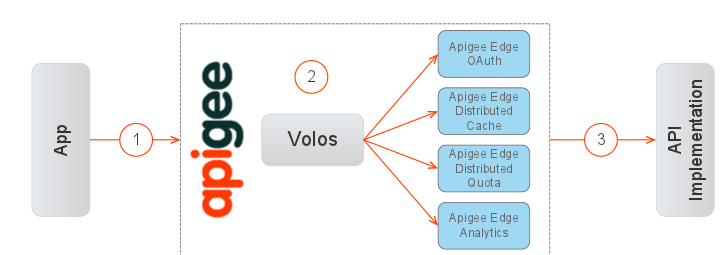-
Notifications
You must be signed in to change notification settings - Fork 24
About Apigee 127
The programming flow looks like this:
![enter image description here][2]
-
Use the Swagger editor to define, test, and document your API model. Apigee 127 Node.js modules validate and consume the resulting Swagger definition.
-
Behind the scenes, Apigee 127 wires up your app, routing HTTP requests to specific Node.js controller files.
-
Then, you implement your API logic in those controller files.
-
In addition, you can add a Volos layer to your app to perform caching, quota, and OAuth security for your API.
Running locally, your API make calls to Apigee Edge to handle activities like caching, quota management, and OAuth. Volos provides the glue that binds together your API implementation and Apigee Edge.

- The app makes an API call and the endpoint is the Apigee agent (Volos).
- Volos calls Apigee Edge to perform OAuth, Quota, or Caching. Volos only sends metadata to Edge, not the API payload.
- Edge returns a response indicating whether to allow the API call.
- If allowed, the API call is proxied to the Node.js API implementation.
- The API response is returned from the API implementation.
- (Optional) Metadata is sent to Edge for centralized analytics and monitoring.
You can deploy and run the entire API implementation on the Apigee Edge platform.

- An app makes an API call to Apigee Edge.
- Volos leverages direct access to Apigee Edge Services.
- The API call is processed using the normal Apigee Edge flow.
TBD.
Having Trouble? Try posting your question to the Apigee Community. Or, for more links and resources, check out our Help Page
| Need help? Visit the Apigee Community ! |
|---|
-
Getting started
-
Add policies to your API
-
Add security policies
-
Deploy your projects
-
Programmatic hooks
-
Good to know about
-
Deep dives
-
Reference topics
-
Troubleshooting and getting help
-
Related resources